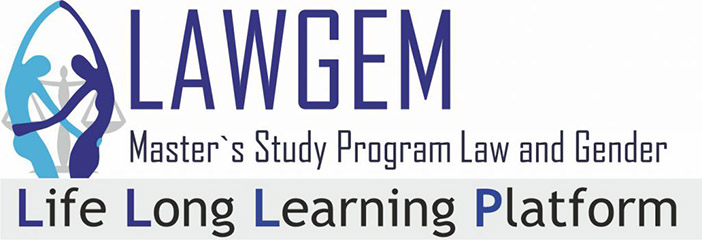Faculty of Law University of Belgrade in the cooperation with the OSCE Mission to Serbia organized the Spring School/Pilot Master – Law and Gender. This Spring School was based on the project LAWGEM and served as a kind of the pilot practicing of the future master`s study program Law and Gender. It covered all courses contained in this master`s study program curriculum, and the reading materials consisted to a great extent of the books published within the LAWGEM project. The School was organized in a hybrid form – in person at the Faculty of Law University of Belgrade and online, with 69 participants (students of undergraduate, master and PhD level), both from Serbia and other countries around the world (Albania, Belarus, Bosnia and Herzegovina, Brazil, China, Croatia, France, Germany, India, Iran, Italy, Montenegro, Russia and Vietnam). It is certain that participants of this School have gained valuable knowledge which will help them on their academic path and in their professional careers. On the other hand, the Spring School represented an excellent preparation of lectures and pedagogic experiences of the scholars from the University of Belgrade Faculty of Law for the future conducting the master’s study program Law and Gender.
The course Gender Perspective of Labor Law, which was held by Professor Dr. Ljubinka Kovačević, helped participants to understand the importance of introducing a gender perspective into labor law, as well as the importance of dealing with gender equality in the context of the labor market and the world of work in general. Special attention was in the first place devoted to the emergence and development of labor law as a branch of law, and the important role of labor law in achieving labor and social peace and regulation of competition, as well as in the struggle to achieve the ideal of social justice. Consideration of the origin and development of labor law indicates that labor law is built on the model of a male worker employed on the basis of open-ended full time employment contract, while social security law is built on the model of a man as the breadwinner of a family. In this context, the comprehensive protection of women through labor law can only be discussed since the end of the 19th century. However, the first norms that were introduced had, as an aim, to protect women, rather than to guarantee equality between men and women. In that sense, it can be stated that labor law for a long time did not recognize the specific challenges that women face on the labor market and in the world of work. Even today, when there are numerous guarantees of equality between men and women at the international level, both universal and European, there are still many challenges and obstacles that women continue to face. Therefore, there is a need for both individual and collective labor law to recognize these challenges and respond to them. Moreover, the lecture discussed the challenges typical for the contemporary world of work, which arise from the neoliberal orientation that shapes the world of work, demographic changes, international migration, technological development, climate change, as well as major crises, and all of which has its own reflection when it comes to gender (in)equality in the world of work. It was particularly emphasized that the fight for gender equality in labor law implies the empowerment of women, but also the recognition of the position and specific challenges that men face in the world of work. Finally, through the course, the issue of intersectional of women and girls with disabilities was analyzed in detail.
Gender Perspective of Labour Law 1: History of Labour Law from a Gender Perspective
Gender Perspective of Labour Law 2: Intersectional Discrimination of Women with Disabilities

